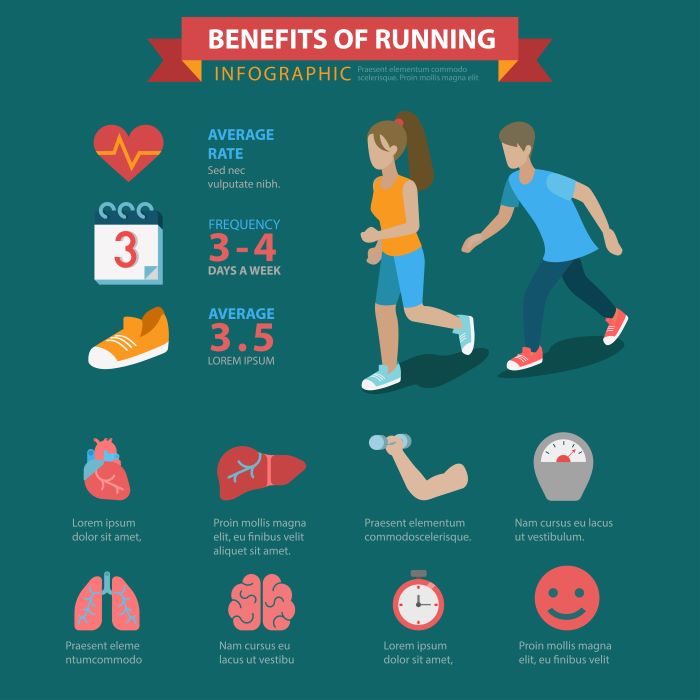Embarking on the journey to complete a half marathon is an exhilarating experience that goes beyond just crossing the finish line. Understanding the half marathon training journey is essential for both novice and seasoned runners. This journey typically spans several weeks, requiring a blend of physical preparation, mental fortitude, and strategic planning.
First, it’s important to establish a solid foundation. This includes:
- Assessing Your Current Fitness Level: Knowing where you stand helps tailor your training plan.
- Setting Realistic Goals: Whether your aim is to finish, achieve a specific time, or simply enjoy the experience, having clear goals will guide your training.
- Choosing the Right Training Plan: Selecting a plan that fits your lifestyle and aligns with your goals is crucial. Many plans range from 10 to 16 weeks.
As you progress, you will incorporate various training techniques, such as:
- Long Runs: These are essential for building endurance.
- Speed Work: This helps improve your pace and efficiency.
- Cross-Training: Engaging in different physical activities can enhance overall fitness and reduce injury risk.
Throughout this journey, it’s equally important to focus on nutrition and recovery. Proper fueling and rest can significantly impact your training outcomes and overall performance.
Ready to dive deeper into training tips and strategies? Visit our website to learn more and get started today! Click here.
Creating a Structured Training Plan for Half Marathon

Creating a structured training plan for your half marathon is a pivotal step in ensuring a successful race day. A well-designed plan lays the foundation for your training and helps manage your progress effectively. Here are key components to consider when crafting your plan:
1. Determine Your Training Duration: Most half marathon training plans range from 10 to 16 weeks. Choose a duration that allows ample time for gradual progression based on your current fitness level.
2. Incorporate Different Types of Runs: A balanced plan should include:
- Long Runs: These are crucial for building endurance and should gradually increase in distance each week.
- Tempo Runs: These runs help improve your lactate threshold, allowing you to sustain a faster pace for longer.
- Interval Training: Short bursts of high-intensity running followed by rest periods can enhance speed and cardiovascular fitness.
3. Schedule Rest Days: Rest is just as important as training. Incorporate at least one or two rest days each week to allow your body to recover and prevent injuries.
4. Monitor Your Progress: Keep a training journal to track your runs, feelings, and any challenges you face. This will help you make necessary adjustments to your plan and maintain motivation.
5. Plan for Race Day: As your training progresses, practice race-day strategies such as pacing, nutrition, and hydration to ensure you feel prepared when the big day arrives.
By creating a structured training plan tailored to your needs, you can build confidence and enhance your performance as you prepare for your half marathon.
Essential Workouts and Running Techniques to Implement

To successfully prepare for a half marathon, incorporating essential workouts and running techniques into your training routine is vital. These elements not only improve your endurance and speed but also enhance your overall running efficiency. Here are some key workouts and techniques to implement:
1. Long Runs: These are the cornerstone of your training. Aim to complete a long run once a week, gradually increasing your distance. This builds stamina and prepares your body for the demands of race day.
2. Tempo Runs: Tempo runs are designed to improve your speed and endurance. Run at a comfortably hard pace—typically around 80-90% of your maximum effort—maintaining it for 20-40 minutes. This helps your body adapt to sustained efforts.
3. Hill Workouts: Incorporating hill training strengthens your leg muscles and improves your running form. Find a hill with a moderate incline and run up it at a hard effort, then jog or walk back down for recovery. Repeat several times.
4. Fartlek Training: This Swedish term means ‘speed play’ and involves varying your pace throughout a run. For example, sprint for 30 seconds, then jog for 1-2 minutes, and repeat. This technique not only builds speed but also keeps your workouts engaging.
5. Strength Training: Don’t overlook the importance of strength workouts. Focus on exercises that target your core, hips, and legs, such as squats, lunges, and planks. Strengthening these areas will improve your running form and reduce the risk of injury.
6. Proper Running Form: Pay attention to your running technique. Maintain an upright posture, relax your shoulders, and ensure your feet land beneath your body. Proper form can enhance efficiency and reduce fatigue.
By integrating these essential workouts and techniques into your half marathon training, you’ll not only prepare your body for the race but also build the confidence needed to cross the finish line strong.
Nutrition and Hydration Strategies for Optimal Performance

Fueling your body properly is just as crucial as your training when it comes to preparing for a half marathon. Implementing nutrition and hydration strategies can significantly impact your performance on race day. Here are key guidelines to consider:
1. Carbohydrate Loading: As the primary source of energy for runners, carbohydrates should form the foundation of your nutrition plan. In the week leading up to the race, gradually increase your carbohydrate intake to maximize glycogen stores. Foods like pasta, rice, bread, and fruits are excellent choices.
2. Balanced Meals: Each meal should include a balance of carbohydrates, proteins, and healthy fats. Aim for a plate filled with whole grains, lean proteins (such as chicken, fish, or legumes), and plenty of vegetables. This combination supports energy levels and aids in muscle recovery.
3. Pre-Run Nutrition: On the day of your run, eat a light meal or snack about 1-2 hours prior. Opt for easily digestible foods like oatmeal, a banana, or a slice of toast with peanut butter. Avoid heavy or greasy foods that could upset your stomach.
4. Hydration: Staying hydrated is essential for optimal performance. Begin hydrating a few days before your long runs or races. During your training, aim to drink water regularly and consider electrolyte-rich drinks for runs lasting longer than an hour.
5. Post-Run Recovery: After your training sessions, replenish your body with a recovery snack or meal within 30 minutes. Include a mix of carbohydrates and protein, such as a protein shake with a banana, to aid in muscle recovery and refuel energy stores.
6. Listen to Your Body: Everyone’s nutritional needs can vary. Pay attention to how different foods and hydration levels affect your performance. Experiment during your training to find what works best for you before race day.
By adopting these nutrition and hydration strategies, you’ll enhance your endurance, improve recovery, and set yourself up for a successful half marathon experience.
Injury Prevention Tips for Half Marathon Runners
Injuries can be a significant setback for half marathon runners, making it essential to prioritize injury prevention throughout your training. Implementing effective strategies can help you stay healthy and complete your race without issues. Here are some vital tips:
1. Gradual Mileage Increase: Follow a structured training plan that allows for a gradual increase in mileage. The general rule is to increase your weekly mileage by no more than 10%. This approach helps your body adapt and reduces the risk of overuse injuries.
2. Proper Footwear: Invest in a good pair of running shoes that provide the right support and cushioning for your foot type. It’s advisable to visit a specialty running store for a professional fitting and to replace your shoes every 300-500 miles to maintain optimal performance.
3. Cross-Training: Incorporate cross-training activities such as cycling, swimming, or strength training to improve overall fitness and reduce the repetitive strain on your running muscles. This variety can enhance your endurance while preventing burnout.
4. Stretching and Strengthening: Include dynamic stretching in your warm-up routine and static stretching in your cool-down. Additionally, focus on strengthening exercises for your core, hips, and legs, as strong muscles can help stabilize your joints and prevent injuries.
5. Rest and Recovery: Allow adequate rest days in your training schedule to let your body recover and adapt. Listen to your body and take a break if you experience persistent pain or fatigue. Incorporate recovery techniques such as foam rolling and yoga to enhance flexibility and reduce muscle tightness.
6. Pay Attention to Pain: Learn to differentiate between normal soreness and potential injury pain. If you notice sharp or prolonged discomfort, don’t ignore it. Consult a healthcare professional if symptoms persist, to prevent minor issues from becoming serious injuries.
By integrating these injury prevention tips into your training routine, you’ll be better equipped to handle the challenges of half marathon preparation and minimize the risk of setbacks.
Preparing Mentally and Physically for Race Day

As you approach race day, the importance of both mental and physical preparation cannot be overstated. The culmination of your training efforts will be tested, and being ready mentally can be just as crucial as your physical readiness. Here are key strategies to ensure you’re prepared:
1. Visualize Success: Spend time visualizing your race day. Imagine the course, the atmosphere, and crossing the finish line. This mental rehearsal can enhance your confidence and help alleviate pre-race anxiety.
2. Develop a Race Strategy: Plan your race day pacing and nutrition strategy in advance. Knowing how to pace yourself and when to consume fluids or energy gels will help you manage your energy effectively during the race.
3. Tapering: In the weeks leading up to the race, adopt a tapering phase where you gradually reduce your mileage. This allows your body to recover and rebuild strength while maintaining fitness, ensuring you’re at your best on race day.
4. Prepare Your Gear: Finalize your race-day outfit, including shoes, clothing, and any accessories. Lay out all your gear the night before, ensuring everything is in order so you can focus solely on the race.
5. Stay Positive: Engage in positive self-talk and surround yourself with supportive individuals. A positive mindset can significantly influence your performance and help you maintain motivation during challenging moments.
6. Rest Well: Prioritize quality sleep in the days leading up to the race. A well-rested body will perform significantly better than one that is fatigued. Avoid any strenuous activity the day before and focus on relaxation.
Combining these mental and physical strategies will set you up for a successful race day experience. Remember, you’re not just running a race; you’re celebrating your hard work and dedication. Visit our website to learn more and get started today! Click here.


